► All-new Citroen e-C3 driven in the UK
► Surprisingly spacious
► Simplicity galore, comfort too
After years of complaining there are no good small electric cars, the market is suddenly saturated with low-cost options. This includes the all-new Citroen e-C3, a car that’s available for £22,000 and has an official range of 199 miles. If that’s too rich for you, a cheaper version with a smaller battery is on the way.
That means the e-C3 costs even less than the retro Renault 5, BYD Dolphin and Mini Cooper Electric, if not the Leapmotor T03 and Dacia Spring. That said, the e-C3 feels a lot more substantial and quicker than either bargain bin option. Perhaps its biggest rival is the Fiat Grande Panda, a car built on the same platform.
Has the Slovakian-built e-C3, also available as a 100hp Puretech petrol C3, got what it takes to beat the opposition? We’ve driven the car abroad and in the UK to see if it should be top of your supermini shopping list. If you want to know more about how we test, we’ve got a separate page for that.
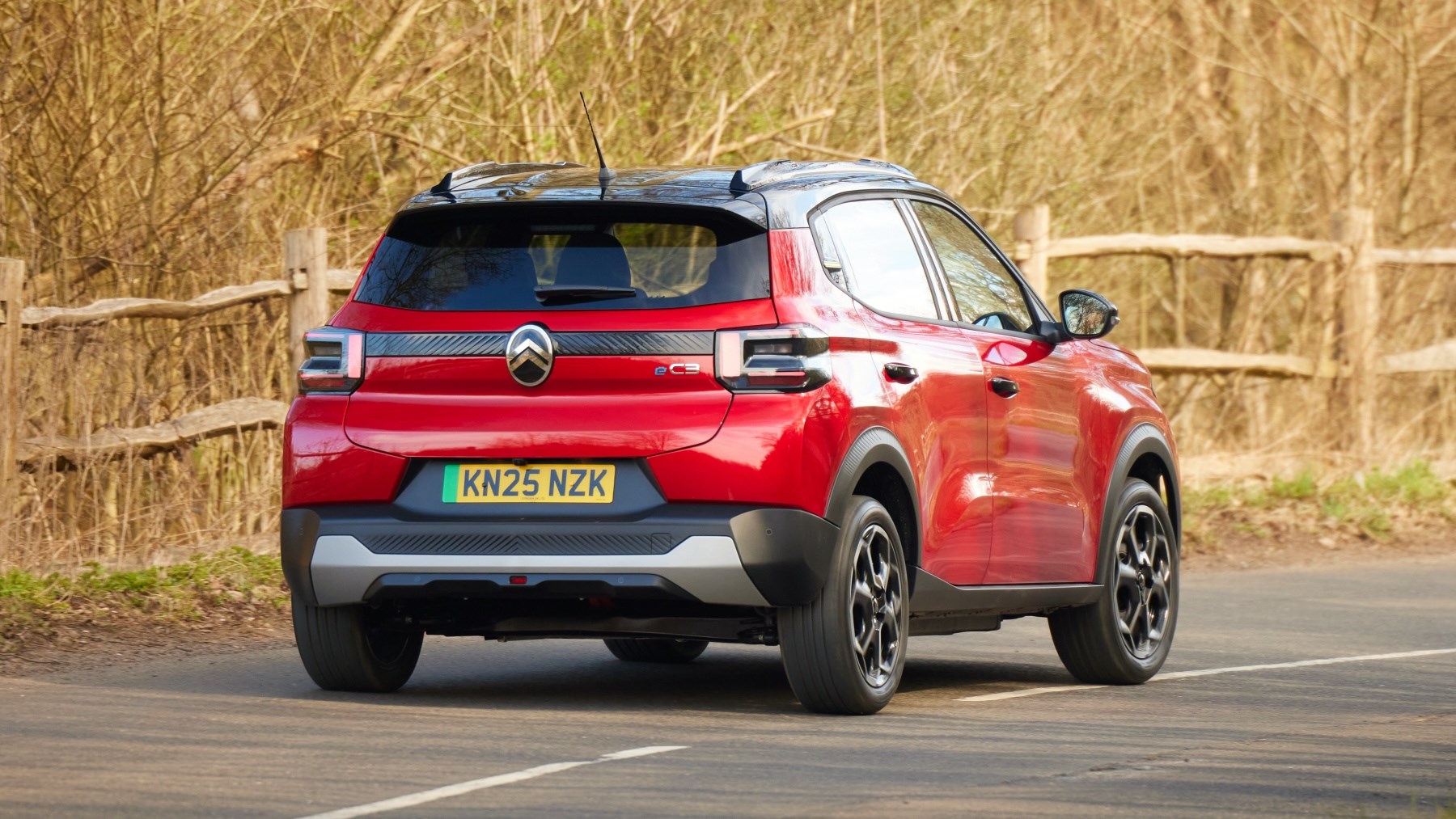
At a glance
Pros: Good value for an EV, impressive space, splendid comfort
Cons: Stepped boot, aloof steering
What’s new?
The Stellantis group has repositioned Citroen as its value brand, to take on budget brand Dacia (owned by cross-town rival Renault). But the Chinese-built Spring isn’t fishing in the e-C3’s pool: it’s about 300mm shorter (more city car than supermini), has noticeably less power and only goes about 140 miles between charges.
How has Citroen delivered a bigger, plusher, errr, rangier car at this price? With an obsessive focus on costs: this car is to value EVs what the McLaren Senna is to stripped-out, track-monstering hypercars. First up, Citroen has squeezed out complexity: it has 30 per cent fewer parts than the outgoing Citroen C3, a cute hatchback rather than a baby SUV.
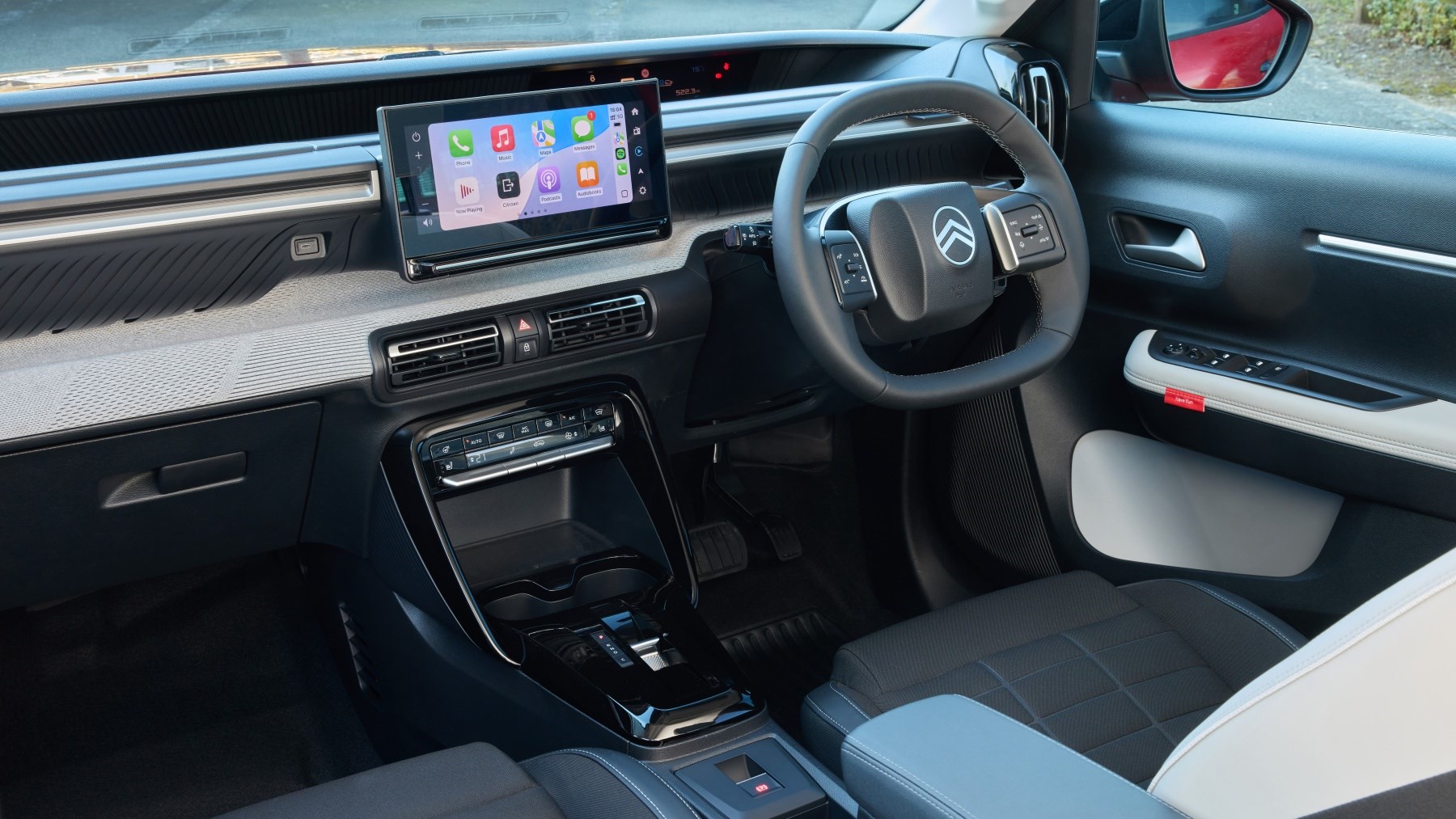
Engineers describe it as a low-cost programme, which has lifted the philosophy (if not components due to differing regulations) from Citroen’s low-cost car programme for India and Brazil. That means a different, cost-saving approach for suppliers, manufacturing and to the equipment list, with a big red pen crossing out leather upholstery, powered seats, a glass roof, drive modes, paddleshifts and so forth.
Citroen has taken great delight in offering only the features customer say they want and use on this ‘new’ Smart Car platform. Perhaps unsurprisingly, the ubiquitous CMP served as a base for this smaller, simpler architecture. Other beneficiaries include Fiat’s impressive Grande Panda, the Vauxhall Frontera and Citroen’s own C3 Aircross.
What are the specs?
Packed into the 2.54m wheelbase is a 43.7kWh usable battery, using the lower-priced lithium iron phosphate chemistry beloved by BYD. It’s good for a 199-mile range on the WLTP testing cycle if you stick with entry-level trim.
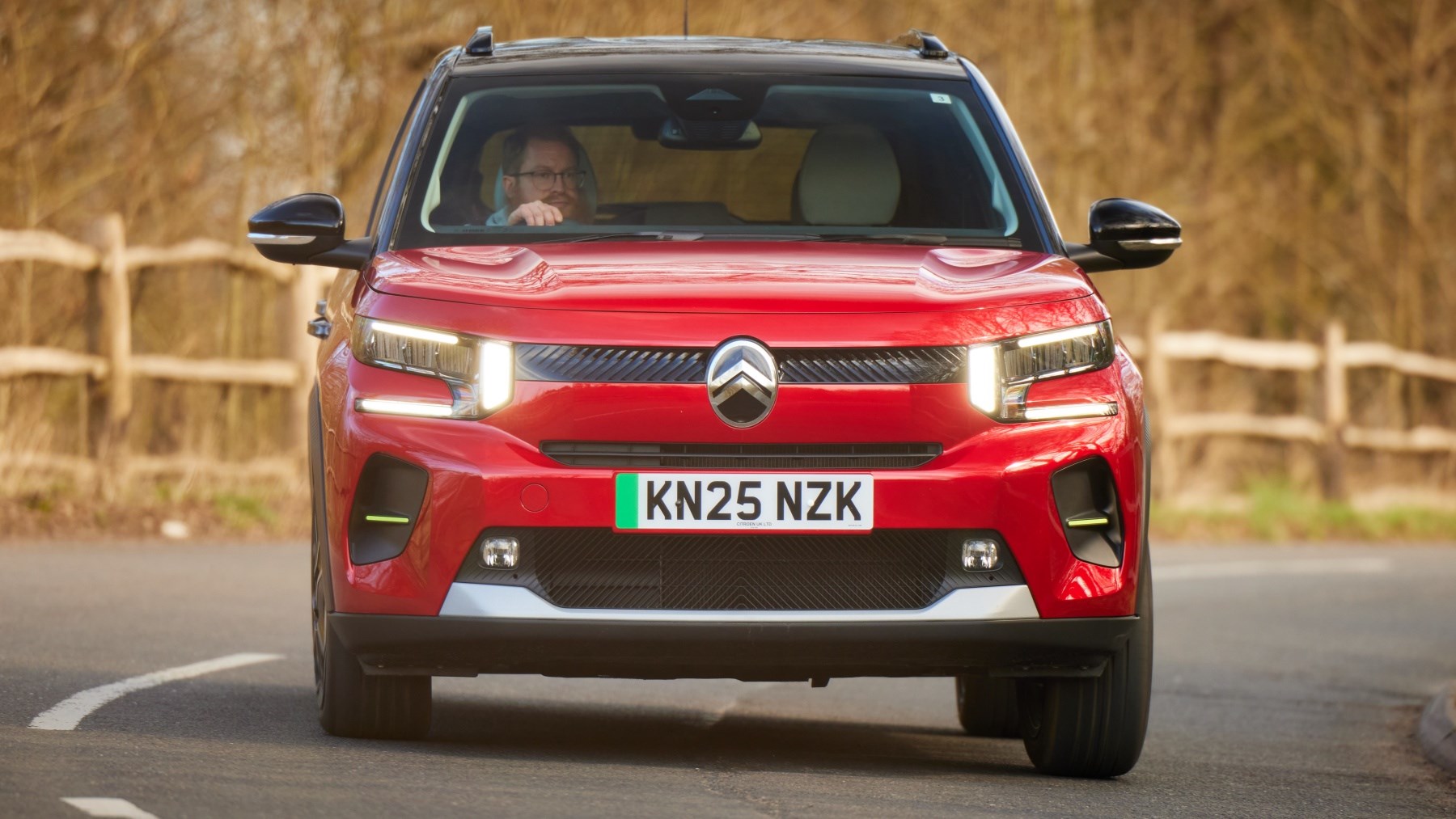
Citroen says the battery can be charged from 20 to 80 per cent in 26 minutes, which sounds impressive but remember this is a modest battery. Max DC charging is actually just 100kW. Power is a thumping 111bhp which gives a respectable 10.4 second 0-62mph run.
What’s it like to drive?
In a world of rapid, instant-torque EVs, the e-C3 sounds a bit underpowered, but it’s plenty enough to spin the 1483kg SUV up to urban speeds, and its decent mid-range torque is sufficient for the odd A and B road overtake on our Oxfordshire test route.
Citroën has copied Peugeot’s i-Cockpit shrunken steering wheel (to do so it had to get permission from its sister brand): the vegan leather feels silky to the touch and it never obscures the high-set HUD. The steering twirls breezily through low-speed manoeuvres, abetted by a parking camera on top-spec Max models (entry-level Plus cars only get a rear sensor); use your eyes as the forward sensor.
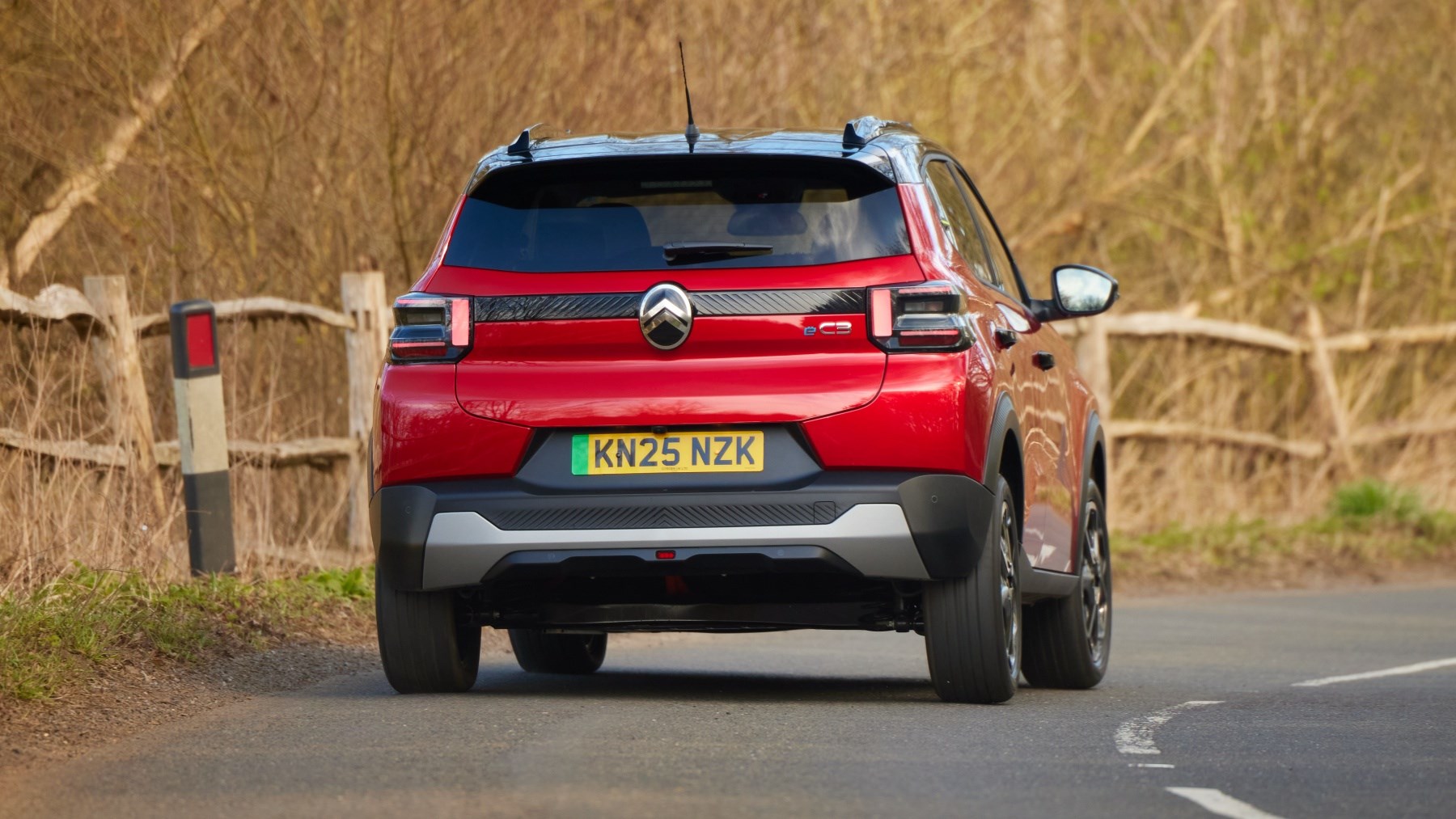
Accelerate up to town speeds and the steering adds heft quite nicely but it’s languid swinging off dead-centre, and the nose is reluctant to swoop into corners. A 5 feels far sharper, let alone a Mini Cooper.
The soft suspension is noticeable from the start, with accelerator and brake triggering some pitch. Even Oxfordshire’s gnarlier roads are coped with impressively by Citroen’s hydraulic bump stops, which smoothly dissipate the energy from extreme suspension extensions or compressions and are fitted to a C3 for the first time.
The body is bounced up and down by bigger crests and compressions but it’s always a soft landing, thanks to the impressive cushioning effect – the C3 is like a driving a padded cell. And even after big shocks, the body only takes a stroke or two to settle. Such comfort boosts the zen-like feeling on board. Only a bit of patter on the motorway could be seen as disappointing, although that’s par for the course with most things this size.
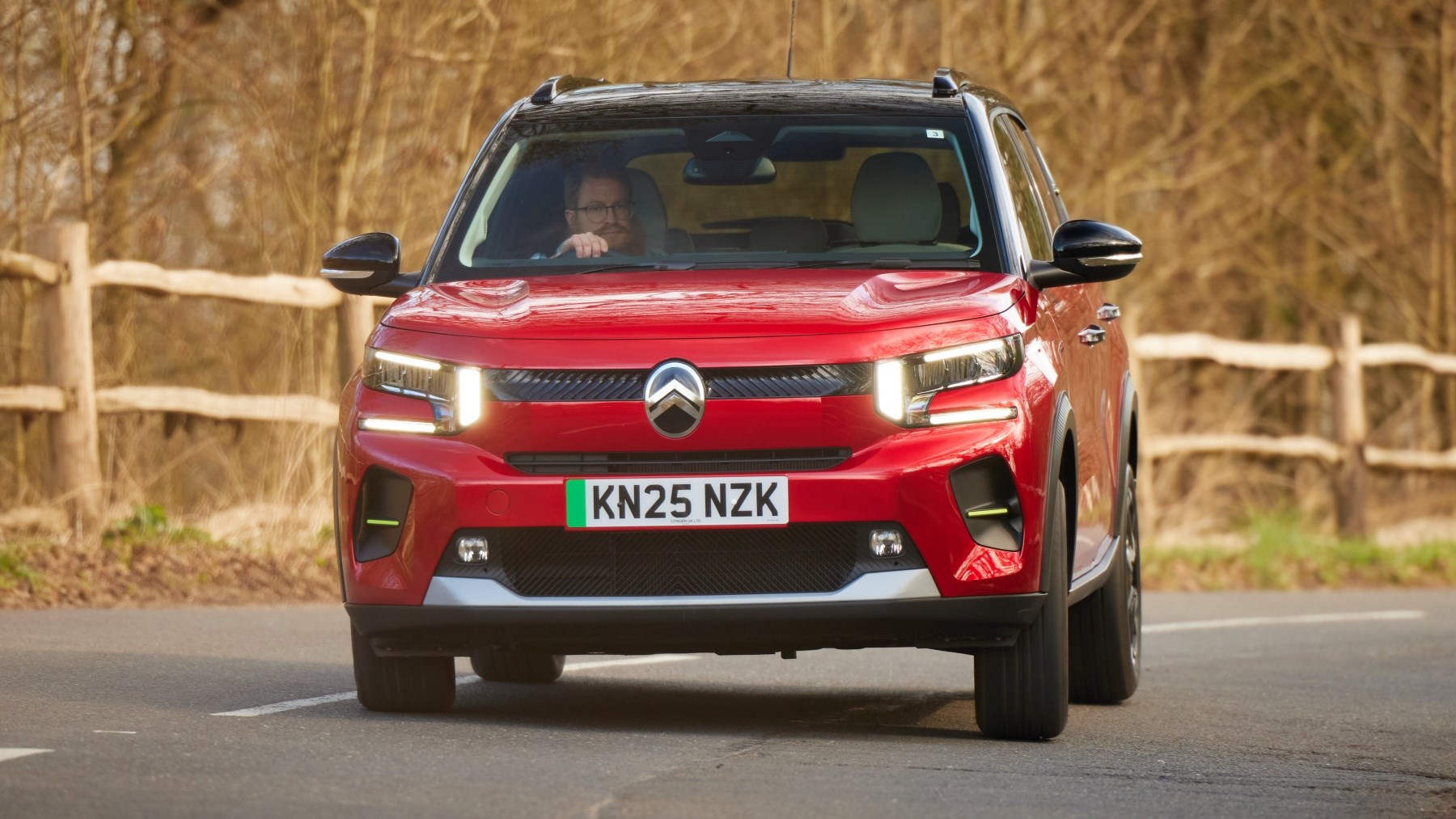
An unintended consequence might be a car that goes to pieces in corners. And the C3’s body does roll lustily but it’s progressive, and even though the body sometimes feels like it’s heading for a different postcode to the wheels, the Goodyear tyres never threaten to give up grip. It’s vice free and capable, if not fun to punt along at speed.
While many electric cars offer grades of regenerative braking and sometimes a one-pedal driving mode, the 2024 Citroen e-C3 unsurprisingly keeps it simple. Lift off the accelerator and the Citroen smoothly slows, in a manner that resembles combustion engine braking. You end up using the left pedal more than in some EVs with the brakes proving responsive and effective.
Drive sensibly on undemanding routes that shy from the motorway and over four miles per kWh is possible, with higher speeds dropping you into the thress.. It’s not the quietest of EVs: wind noise starts kicking in past the 50mph mark, and you’ll get added tyre grumble and some motor whine at motorway speeds.
What’s it like inside?
Open the new Citroen e-C3, jump in and the plump, padded seats are cushion far better than many other budget offerings. The high rood gives plentiful headroom, allowing you to crank the seat high to see over the flat bonnet. It’s an imperious perch for a front-wheel drive supermini – the EV has 163mm of ground clearance on its 17-inch alloys.
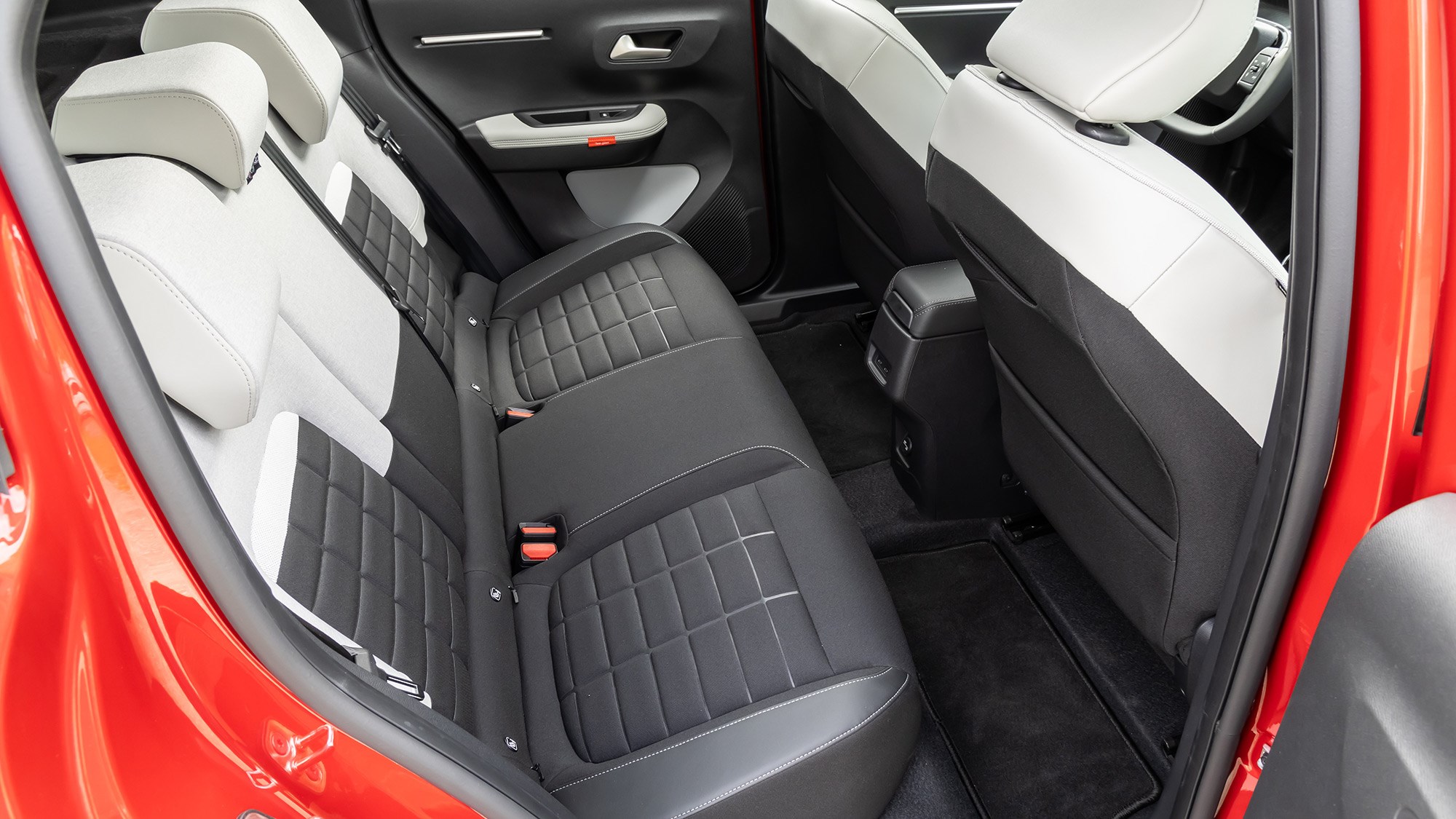
The rear seats aren’t the cheap seats: they have the same extra padding and handsome design as up front. And space is surprisingly plentiful thanks to the high roof and high-set seats: a 6ft passenger can sit behind a 6ft driver without his knees touching the seat back, so long as the driver doesn’t insist on a sports car driving position. It makes the Renault 5 look incredibly cramped in comparison.
The boot stows 310 litres of luggage but it has an awkwardly high loading lip, resembling looking into a wishing well. The rear seat splits 60:40, and you can stow 992 litres with both bits folded down.
You’ll need to use a key to turn it on – keyless go is on the banned list. Instead of a digital driver’s binnacle lighting up with fancy software animations, Citroen’s definition of a ‘head-up display’ sits in a recess just beneath the top of the dash and it looks a bit like a ‘90s Renault Espace’s.
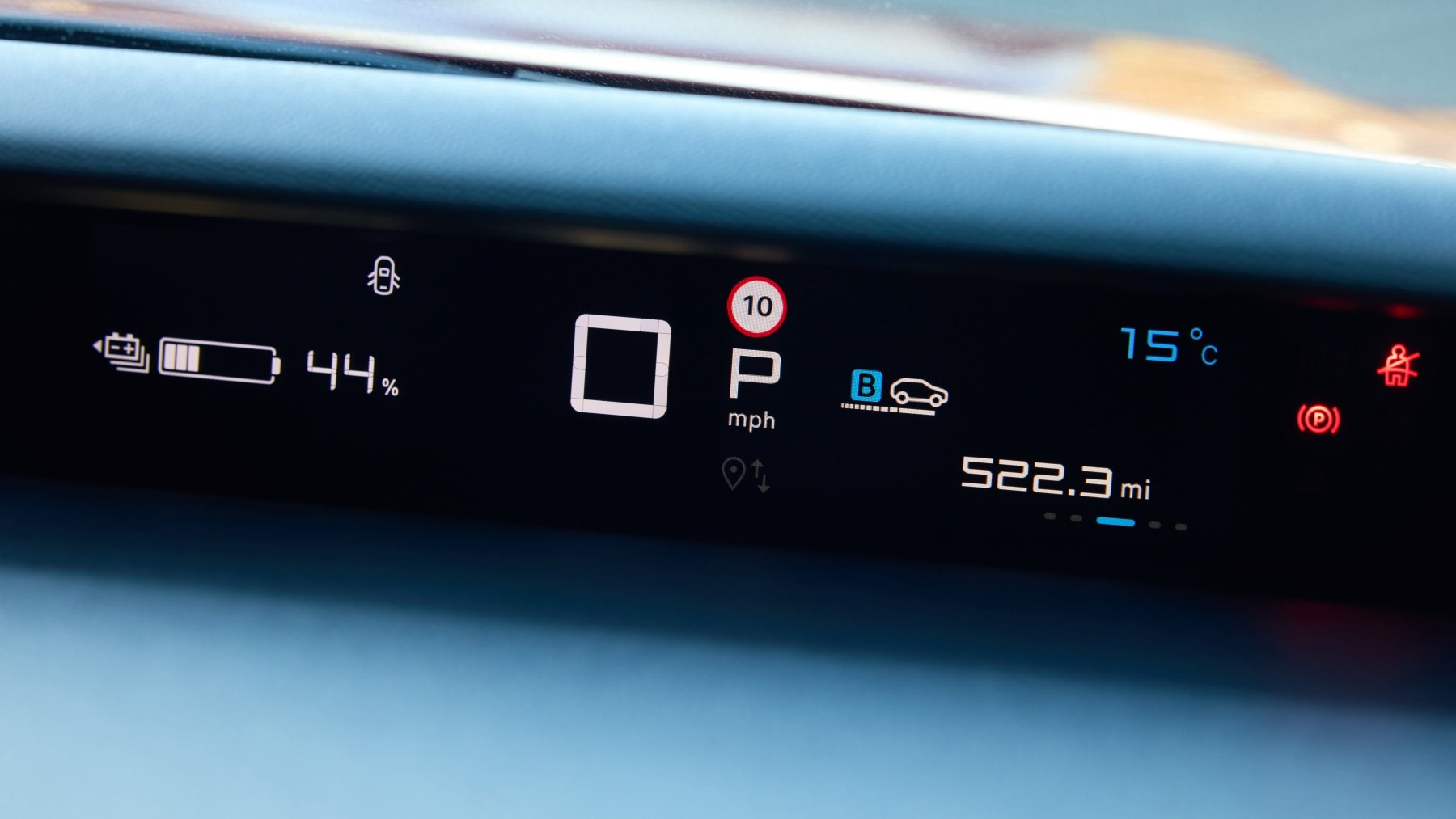
It features a digital speedo, battery charge level, selected gear and can toggle through trip info and the like. And having just the one driver’s display (rather than an actual HUD on the windscreen made largely redundant by the instrument binnacle) reduces parts and cost. Crucially, it just works.
Naturally there’s a central touchscreen: the graphics are basic but you can render Apple CarPlay and Android Auto instead. Both UK trims (Plus and Max) get it but it’s not standard kit In mainland Europe: customer smartphones will provide the connectivity on the real entry-level trim.
You get a decluttered cockpit Citroen describes as zen-like, which makes a virtue of the less-is-more surroundings. The standard air-con (automated on Max trim) is controlled by physical toggles, there’s a silver rotary gear selector and that’s about it.
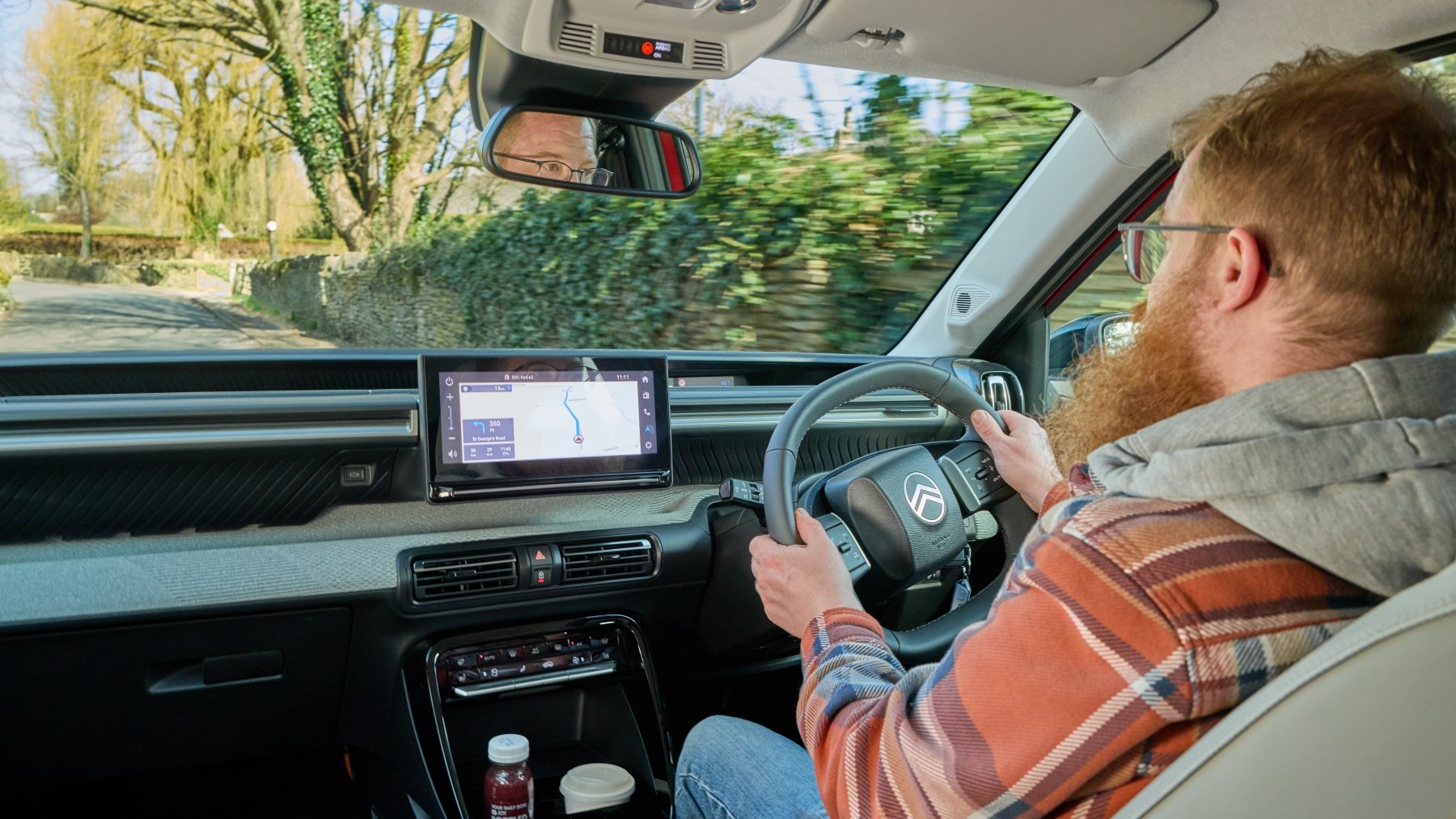
Variety comes from a litany of patterns – plastic sections are etched in wavy and straight lines, haphazard perforations adorn the light fabric trim and the headliner is a pale colour. Some gloss black trim offsets swathes of scratchy plastics (totally acceptable in a value car), the door bins have white inserts to help you spot things and little red labels with peppy messages – ‘Have fun!’ and ‘Be cool!’ – are stitched into the armrests. An outbreak of Mini vibes in an otherwise logical interior.
Verdict: Citroen e-C3
Citroen’s new C3 is an Aldi in a Sainsbury’s world where car manufacturers have over-specified superminis.
It’s good value but doesn’t feel cheap, with Citroen putting the money where customers will benefit, namely in the comfort, packaging and a pint-sized electric drivetrain. The real-world sub-180-mile range will put off some, although it’s by no means terrible for the money.
For consumers pondering going electric for their low-mileage or second car, the e-C3 has much to admire. The order books open in July 2024 with deliveries in November. There are no frills and no thrills but the e-C3 a clever and likeable car. Yes, a Renault 5 is far more desirable and not much more, but this and the Grande Panda are far more sensible alternatives that are anything but beige.